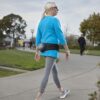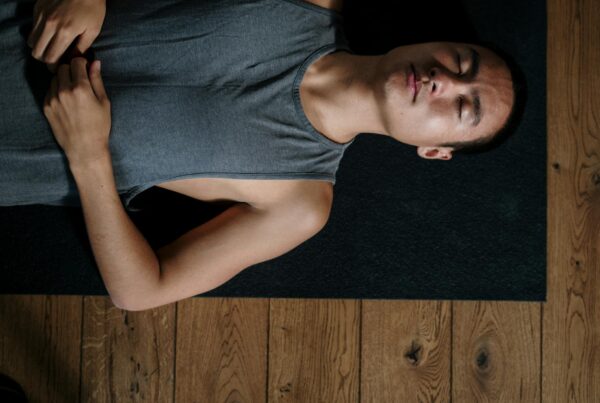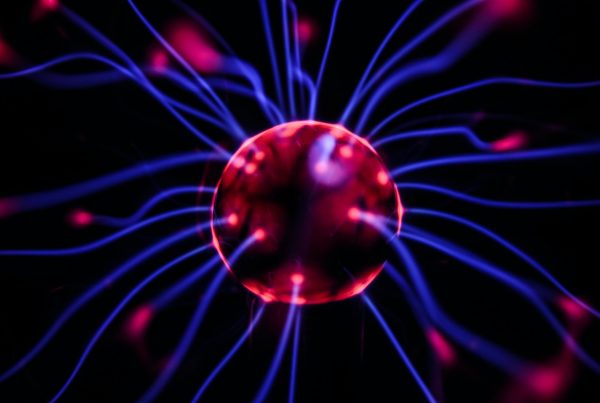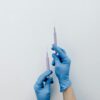Hormonal health is a cornerstone of longevity. While many believe aging only begins after menopause, the reality is different: the gradual loss of youth starts decades earlier. Dr. Gary Aaron, one of Australia’s leading menopause and men’s health specialists, explains why understanding your hormones matters at any age—whether you’re in your 20s, 30s, or 60s. The sooner you establish your hormonal baseline and prioritize metabolic health, the better your prospects for longevity.
Dr. Gary Aaron’s Journey in Hormonal Health
For over 30 years, Dr. Gary Aaron has specialized in men’s health, women’s health, hormonal balance, and regenerative medicine. He founded the Australian Menopause Centre, authored Sex for Life, and became a Fellow of the American Academy of Anti-Aging Medicine.
His deep interest in hormonal health was sparked in 2002 when the Women’s Health Initiative released groundbreaking findings about hormone replacement therapy (HRT).
The Women’s Health Initiative: A Turning Point
In 2002, the Women’s Health Initiative study was stopped early after researchers found concerning health risks in women using a specific combination of synthetic hormones: Premarin (conjugated equine estrogen) and Provera (medroxyprogesterone acetate, a synthetic progestin).
“They showed a significant increase in risk of breast cancer for women who used the combination of Premarin and Provera for longer than five years,” Aaron explains.
The announcement had immediate global impact. Approximately one-third of women worldwide who were taking HRT discontinued their treatment, fearing breast cancer. Many doctors stopped prescribing it entirely, concerned about potential litigation.
What the Research Really Revealed
Years of subsequent analysis uncovered something critical: the problem wasn’t estrogen—it was the synthetic progestin, Provera.
This discovery opened the door to a different approach: bioidentical hormone replacement therapy (BHRT), also known as body-identical HRT.
Understanding Bioidentical Hormone Therapy
Bioidentical hormones are derived from plant sources and have a biochemical structure identical to the hormones your body naturally produces. This differs significantly from synthetic hormones like those used in the original WHI study.
Premarin, which stands for “pregnant mare urine,” contains equine estrogens with a dramatically different biochemical structure from human hormones—which explains the side effects observed in early studies.
The Safety Profile of Bioidentical HRT
Current research indicates that bioidentical hormone replacement therapy has a more favorable safety profile than synthetic alternatives:
- Studies suggest that bioidentical progesterone carries a lower breast cancer risk compared to synthetic progestins
- The risk profile appears significantly better when using bioidentical hormones versus synthetic versions
- Estrogen-only therapy (for women who’ve had hysterectomies) has not shown increased breast cancer risk
“You’re replacing what the body produces with something identical—not something dramatically different,” Aaron emphasizes.

Dr Gary Aaron
Important Note: While bioidentical hormones show promise, treatment should always be individualized and supervised by a qualified healthcare provider. The research continues to evolve, and what works for one person may not be appropriate for another.
Women’s Hormonal Changes Through Life
Dr. Aaron reframes the traditional terminology around menopause to focus on what’s actually happening hormonally:
Stage 1: Estrogen Dominance (Perimenopause)
This phase can begin as early as your 30s but typically starts in the early to mid-40s. Ovulation becomes less consistent, which reduces progesterone production while estrogen remains relatively high.
Symptoms include:
- Breast tenderness
- Weight gain
- Irritability
- Fluid retention
- Headaches
- Sugar cravings
- Acne
Stage 2: Estrogen Deficiency (Menopause)
Around ages 52-54, estrogen levels begin declining significantly.
Symptoms include:
- Hot flashes
- Night sweats
- Anxiety
- Emotional sensitivity
- Low energy
Tracking tip: While some symptoms overlap between stages, estrogen dominance symptoms typically occur during the second half of your cycle, whereas estrogen deficiency symptoms can occur throughout.
Stage 3: Low-Hormone Stability (Postmenopause)
This phase represents the years following menopause when hormone levels stabilize at lower levels.
Men’s Hormonal Journey
Men also experience hormonal changes, though they’re less obvious than women’s.
“Men peak in their late teens and early twenties, then experience a gradual decline,” Aaron explains. Testosterone drops by approximately 1-2% per year.
This is why Dr Aaron strongly recommends that men test their testosterone levels during their peak, as if you don’t know your baseline, you won’t realise when your levels have significantly dropped, especially when you’re still technically “within a healthy range.”
“Men just become more grumpy and less energized, and the more stressed a male is, the earlier the onset is.”
In addition to stress, lack of exercise, and obesity can also influence testosterone levels.
Why Baseline Testing Matters
Aaron emphasizes the importance of establishing a baseline. The transition from normal function to diminished well-being is so gradual that men often don’t notice significant changes until they’re already experiencing symptoms like:
- Increased irritability
- Reduced energy
- Lower libido
- Decreased motivation
- Poor concentration
Key insight: Without knowing your baseline testosterone levels from your peak years, you can’t recognize when you’ve dropped significantly—even if you’re still technically “within normal range.”
Factors that accelerate testosterone decline include:
- Chronic stress
- Lack of exercise
- Obesity
The Power of Symptom Tracking
One of Dr. Gary Aaron’s most important recommendations is keeping a symptom calendar. This allows women to identify patterns in their hormonal fluctuations and adjust treatment accordingly.
Why Symptom Calendars Work
“There is nothing more ineffective than being placed on a rigid, static treatment simply because that’s what the doctor prescribed,” Aaron states. “A woman’s symptoms can vary week to week throughout her cycle, and even after she stops menstruating, she often still has an underlying hormonal cycle.”
How to track:
- Record each symptom daily throughout your cycle (typically 28 days)
- Note patterns—which symptoms appear when
- Share this information with your healthcare provider
- Adjust your bioidentical hormone treatment based on your body’s changing needs
“With compounded bioidentical hormones, you have the flexibility to fine-tune treatment based on the patient’s changing needs. There is nothing more ineffective than being placed on a rigid, static treatment simply because that’s what the doctor prescribed,” says Aaron. “A woman’s symptoms can vary week to week throughout her cycle, and even after she stops menstruating, she often still has an underlying hormonal cycle.”
Managing Hormonal Symptoms
Untreated hormonal symptoms can significantly impact quality of life and relationships—especially if your partner is also experiencing hormonal changes.
“People often joke that it’s always the woman’s fault, but it’s not. It’s both,” Aaron notes. “Many individuals have never been taught this.”
While men experience a gradual hormonal decline from their 20s until they wake up as ‘grumpy old men’ in their early 50s, women undergo an extremely different pattern.
“Testosterone starts to significantly increase in girls from the age of puberty with levels peaking in their 20’s, which is why libido is naturally high in adolescence.”
“Their peak testosterone level is around age 13, which is why libido is naturally highest in adolescence,” Aaron reveals, adding that from about age 35 onward, women experience a slow decline in testosterone, but they don’t feel these effects until their mid-40s.
“This is when symptoms like low energy, low libido, reduced motivation, poor focus, and poor concentration start to appear.”
Yet, the biggest and most well-known change in women happens once they stop ovulating and the typically discussed menopausal symptoms begin to appear, such as hot flashes, vaginal dryness, weight gain and retention, poor sleep, sweet cravings, and many more.
“There’s nothing more important than for women who are going through this change to have a clear understanding of what’s happening, as it will empower them.”
Nutrition for Hormonal Health
Rethinking Cultural Eating Patterns
In addition to adjusting hormonal treatments for better health, dietary adjustments can also play a significant part.
“If your cultural way of eating is unhealthy, then it needs to be discarded,” Aaron states directly.
“Think of the old nutritional pyramid. At the base, it placed large amounts of grains and carbohydrates, with fruits and vegetables above that, and fats and proteins at the top. In reality, we should be flipping that pyramid upside down,” says Aaron, sharing that grains and simple carbohydrates should make up only a very small portion of your diet, while proteins and healthy fats should form the foundation.
While some cultural diets can support longevity, Okinawan and Mediterranean diets, many others do not promote long-term health due to their reliance on fat-rich and carbohydrate-rich foods. As such, from a practical standpoint, Dr. Aaron looks at food through an inflammatory lens with pro-inflammatory foods, neutral foods, and anti-inflammatory foods.
New foundation: Proteins and healthy fats should form the majority of your diet, with grains and simple carbohydrates comprising only a small portion.
The Inflammatory Lens
Dr. Aaron categorizes foods based on their inflammatory impact:
Pro-inflammatory foods (minimize these):
- Sugar
- Pasta
- Bread
- Potatoes
- Rice
These foods spike insulin, promote insulin resistance, and increase triglycerides.
Neutral foods:
- Meats and proteins
Anti-inflammatory foods (prioritize these):
- Low-glycemic fruits
- Low-glycemic vegetables
- Omega-3-rich fish
The Truth About Supplements
On the subject of supplements, Aaron takes a pragmatic approach: “If your diet is good, then many supplements simply become expensive urine.”
His recommendation: Use food as your foundation and only add supplements when testing reveals a specific deficiency.
“If you want to maintain youthfulness, if you want longevity, focus on reducing inflammation.”
Bottom line for inflammation: Address the root causes—poor diet, lack of exercise, smoking, and excessive alcohol consumption—rather than trying to supplement your way out of unhealthy habits.
Weight-Bearing Exercise for Bone Health
As women age, declining estrogen weakens bones and increases osteoporosis risk. While adequate calcium, vitamin D, and protein help, Aaron reveals the most effective strategy: weight-bearing exercise.
“There needs to be stress on the bone. Weight-bearing exercise means the muscle is pulling on the bone. That’s the only way you stimulate bone growth.”
Important distinction: A light walk won’t provide this benefit. You need resistance-based exercise like:
- Lifting weights
- Structured strength training
- Resistance band workouts
The Obesity-Hormone Connection
Obesity significantly impacts hormonal health. Excess body fat produces estrogen, which explains why:
- Overweight men often develop gynecomastia (breast tissue)
- Their testosterone converts into estrogen
- Hormonal balance becomes disrupted
- Inflammation increases
Managing weight isn’t merely cosmetic—it provides substantial hormonal benefits.
Exercise and Testosterone
While testosterone is often considered a male hormone, women need it too—for libido, energy, mental clarity, and drive.
“Both men and women benefit from exercise, but men who do not exercise are definitely more vulnerable to testosterone deficiency. The same principle applies to women,” Aaron explains.
 While women do need testosterone, Dr Gary Aaron believes that it’s significantly under-prescribed and that with the right prescriptions – 5 to 10 mg compared to 50 to 100 mg in men – the side effects, oily skin, acne, facial hair, or irritability, are minimal and the benefits are great.
While women do need testosterone, Dr Gary Aaron believes that it’s significantly under-prescribed and that with the right prescriptions – 5 to 10 mg compared to 50 to 100 mg in men – the side effects, oily skin, acne, facial hair, or irritability, are minimal and the benefits are great.
As testosterone takes around six weeks to work, Aaron advises that women shouldn’t be discouraged or impatient in the early stages. With that, he encourages being properly assessed before starting anything, as they will need to know your baseline levels, be tested, and have your treatment supervised.
Testosterone for Women
Aaron believes testosterone is significantly under-prescribed for women. At appropriate doses (5-10 mg compared to 50-100 mg for men), side effects are minimal and benefits substantial.
What to expect:
- Testosterone takes approximately six weeks to show effects
- Don’t be discouraged in the early stages
- Always get properly assessed before starting
- Know your baseline levels
- Have treatment supervised by a qualified provider
Potential side effects at appropriate doses are rare but may include:
- Oily skin
- Acne
- Facial hair
- Irritability
Dr. Gary Aaron’s 10 Rules to Live to 116
Aaron uses the concept of the “marginal decade”—subtract 10 years from your target lifespan and prepare your body for that decade.
“I’m aiming for 116, so my marginal decade begins at 106. I want to be traveling, lifting my grandchildren, carrying groceries, and doing nearly everything I do now, maybe at a slower pace, but without pain, without frailty, and without needing to stop every five minutes.”
10 Longevity Rules:
- Laugh more – Joy and humor are medicine for the body and soul
- Get quality sleep – Dark room, cool temperature, comfortable bed, 7-7.5 hours
- Eat less – Use smaller plates and cutlery; stop at 80% full
- Moderate exercise – Consistency matters more than intensity
- Eat healthy – Prioritize anti-inflammatory foods
- Build strong social connections – Loneliness is a health risk
- Spiritual practice – Whether religion or meditation, shift your focus inward regularly
- Intellectual stimulation – Keep your mind active and engaged
- Put family first – Relationships provide purpose and meaning
- Remain inquisitive – Curiosity keeps you mentally young and engaged with life
Key Takeaways
Hormonal health profoundly impacts longevity and quality of life. The sooner you:
- Establish your hormonal baseline
- Track your symptoms
- Work with a knowledgeable healthcare provider
- Address lifestyle factors like diet, exercise, and stress
…the better positioned you’ll be for a long, healthy, vibrant life.
The bottom line
Remember: bioidentical hormone therapy, when properly prescribed and monitored, offers a promising approach to managing hormonal changes—but it must be individualized to your unique needs and health history.
“If you want to maintain youthfulness, if you want longevity, focus on reducing inflammation,” Dr Gary Aaron concludes.
Disclaimer: This article is for informational purposes only and should not replace professional medical advice. Always consult with a qualified healthcare provider before starting any hormone therapy or making significant changes to your health regimen.
Main photo credit: Photo by Atlantic Ambience
Watch The FULL Interview with Dr Gary Aaron
View this post on Instagram



![women [longevity live]](https://longevitylive.com/wp-content/uploads/2020/01/photo-of-women-walking-down-the-street-1116984-100x100.jpg)










